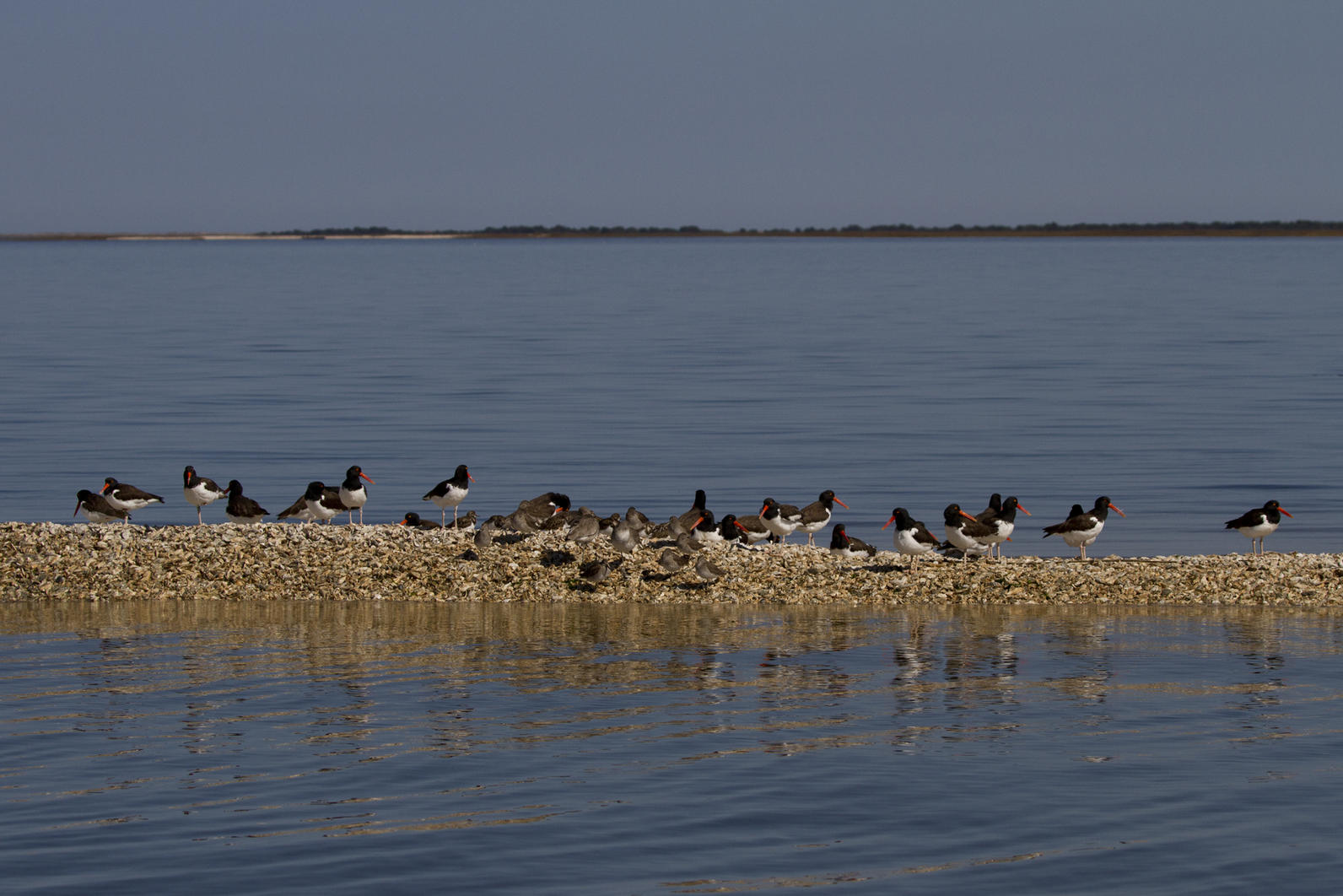This winter, Audubon North Carolina and other members of the American Oystercatcher Working Group came together to conduct the third range-wide winter survey for oystercatchers.
Spanning New Jersey (the northern limit of their winter range) to the Texas-Mexico border, the survey aims to provide a reliable estimate of the population size of oystercatchers on the U.S. Atlantic and Gulf coasts. The survey was coordinated by partners in each state and Manomet, a conservation NGO based in Massachusetts.
For the surveys, counts of suitable oystercatcher habitat were conducted from a small airplane, with one observer counting in real time and a second photographing flocks whenever possible.
Observers on the ground surveyed as many sites as possible as well, counting flocks and individuals and also looking for bands. The northern half of North Carolina from the Virginia border to the Harker’s Island area was covered on February 5, and the southern half down to South Carolina was covered on February 6.
Audubon NC staff, NC Wildlife Resources Commission, National Park Service staff, U.S. Fish and Wildlife Service staff, NC State Parks staff, Camp Lejune staff, NC Coastal Reserve staff, and volunteers (about 22 people in total) covered over a dozen sites on the ground while the plane periodically buzzed overhead. All surveys were timed to be within two hours of high tide, because that’s when oystercatchers are most concentrated at high-tide roost sites and most likely to be detected.

The first oystercatcher survey was conducted in the winter of 2002-2003 and repeated in 2013. The first effort detected 10,971 oystercatchers - ±298 range-wide - with an estimated 647 in North Carolina. The plus-or-minus number indicates the estimated error rate, or the likely upper and lower number of oystercatchers present.
The 2013 survey found an estimated 11,285 oystercatchers - ± 313 winter individuals - and 799 in North Carolina, an increase from the previous effort suggesting that the oystercatcher population, which had been in decline, was making a turnaround.

But why the uncertainty in the counts, and how was the error rate determined?
When observing from a plane, it’s possible that some birds would not be seen and it’s also possible that counts of birds within flocks could be off. Therefore, the ground counters’ flock detection rates are compared with the plane’s, since people in boats are more likely to find flocks, especially small ones, than people 500 or more feet above the ground.
To counteract variability in counting individuals in flocks once the flocks were detected, counts from photographs are compared with the live counter’s numbers to determine an error rate for counting flocks from above.
Final results from the 2018 survey both from North Carolina and range-wide are not available yet, but it will be interesting to see if fewer oystercatchers than usual are wintering in more northern states, due to the inclement weather (remember the first bomb cyclone?) that affected the northeast and mid-Atlantic in January.




